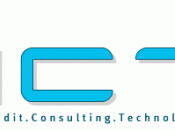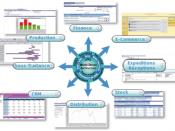It includes a brief introduction of ERP system, the advantages, disadvantages, and ERP system life cycle (plus the resources, tools, and teniques used during each phase)Enterprise Resource Planning (ERP) systemsA package of computer applications that support many, even most, aspects of a company's information needs.
The two key components of an ERP system are a common database and a modular software design. A common database is the system that allows every department of a company to store and retrieve information in real-time. Using a common database allows information to be more reliable, accessible, and easily shared. Furthermore, a modular software design is a variety of programs that can be added on an individual basis to improve the efficiency of the business. This improves the business by adding functionality, mixing and matching programs from different vendors, and allowing the company to choose which modules to implement. These modular software designs link into the common database, so that all of the information between the departments is accessible and real-time.
Benefits, common database enable company to be seamlessly interconnected both internally and externally.
- Cycle time reductionIe) in terms of cost and time reduction in key business processes- Faster information transaction- Better financial management- Laying the groundwork for electronic commerce- Making tacit process knowledge explicitRisks when implementing ES* The resistance from managers and workers who were unprepared for the changes ESs bring. Successful implementation of an ES involve great technological change, largest employing client/server technologies, reengineer business process, and restructure organizational structure and culture.
Differences between traditional systems* Company has a variety of standalone systems.
* Information is chopped up by these standalone systems making it impossible to coordinate planning across different business functions.
* Connections between functions, and often between different geographical areas, were loose and slow. If connection did take...


